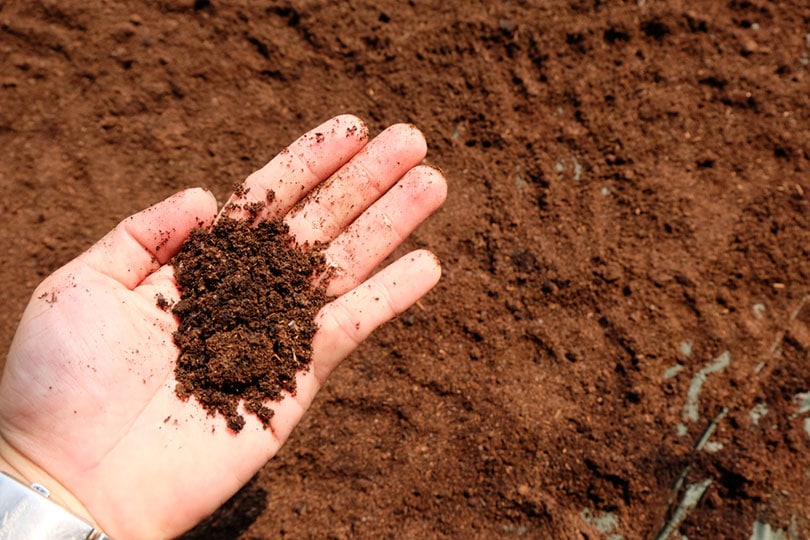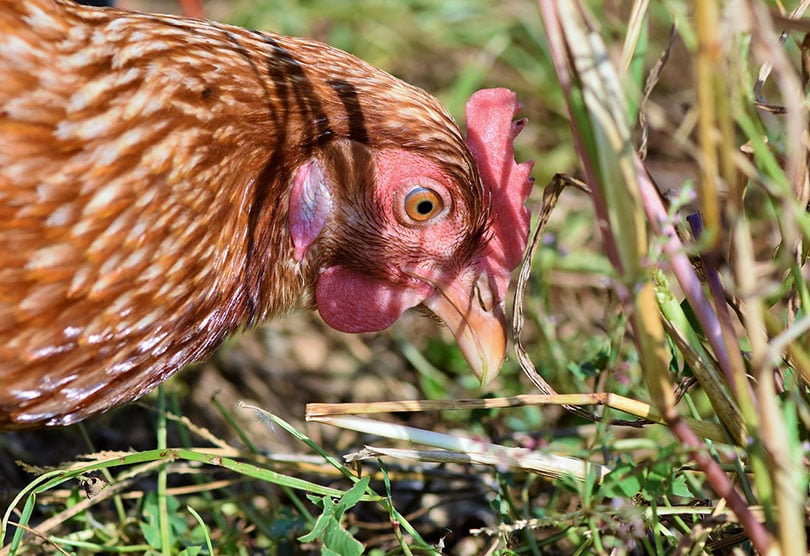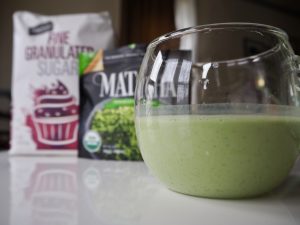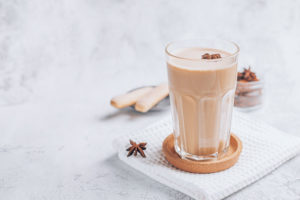
In addition to providing energy-boosting flavor, coffee grounds can be used in a variety of DIY projects, including compost. However, you should make sure that the only grounds your chicken walks on are made of dirt, not coffee. Caffeine is a type of methylxanthine, a compound that’s toxic to chickens.1 Your chicken shouldn’t be eating coffee grounds, or anything else such as tea or chocolate that may contain caffeine. Continue reading to learn more.

What Should I Do If My Chicken Has Ingested Coffee Grounds?
While your chicken shouldn’t eat coffee grounds or ingest anything containing caffeine, it probably will not kill them unless they’ve eaten a considerable amount. The most harm seems to come from exposure over time rather than all at once.
An interesting study from 1944 experimentally used coffee grounds in chicken feed due to wartime shortages. One group of chickens ate food supplemented with coffee grounds while the other group ate food with ground oat hulls instead of coffee grounds. Chickens on the coffee-inclusive diet suffered from significantly stunted growth compared to the chickens eating food with ground oat hulls.
The researchers concluded that coffee grounds have deleterious effects on the growth of chickens. Some time later it was discovered that coffee doesn’t only stunt their growth but is toxic to them due to the caffeine content.

Signs of Caffeine Toxicity in Chickens
In the rare event that your chicken ingests a potentially fatal amount of coffee grounds, they will exhibit these symptoms of caffeine toxicity:
- Restlessness
- Agitation
- Rapid heart rate
- Vomiting
- Panting
- Hyperthermia
- Seizures
If you notice your chicken suffering from any of these symptoms, call your vet immediately.

What If I Use Coffee Grounds In My Compost?
Coffee grounds can provide rich nutrients to your compost and give it an earthy texture. However, if you’re going to use coffee grounds in your compost, you should only spread it in areas that are chicken-free. Some farmers risk it and scatter coffee grounds in areas where their chickens strut around, but since caffeine is a toxic substance, we would rather not take the chance. You can always install a high fence around the chicken coop or around your garden area to keep the chickens away if you still want to use coffee grounds in your garden.
Conclusion
While you shouldn’t feed coffee grounds to your chicken, it probably won’t kill them if they nibble a couple of granules once or twice. However, prolonged exposure has been linked to growth defects and even death. If you must use coffee grounds in your compost, make sure your garden is out of your chicken’s reach.
See Also:
- Can Dogs Eat Coffee Ice Cream? What to Know
- Can Pigs Eat Coffee Grounds?
- Do Pantry Moths Eat Coffee? What to Watch For
- https://cs-tf.com/can-chickens-eat-coffee-grounds/
- https://pdf.sciencedirectassets.com/776861/1-s2.0-S0032579119X65505/1-s2.0-S0032579119501110/main.pdf?X-Amz-Security-Token=IQoJb3JpZ2luX2VjECwaCXVzLWVhc3QtMSJIMEYCIQDGyryRZ5a9a%2BJXkD4VYX%2B31WcPQ5mL9VpESZ5lT5OBmwIhAMR5LciF2%2Fh6BPdl2Akm2u3lwSpBluPhYNpnzTDXnw%2BaKtIECDUQBBoMMDU5MDAzNTQ2ODY1IgybHv9t3N%2F6SeuzQowqrwRU1I5TQP7xTD8wdlTCiKdYh2HN%2FVpXbSy76%2FNQkOQ8sMQI0%2F4z%2FgoVK5Aap1Bi1Yf3HUV%2B6jIlh%2FMuDjvXKLJ2nqD16dO6VKBS40QX6CJxBeN9pCOGCotbi%2BPEavk%2BhxPmZOAq%2BUAW499jSRFiJm0W85y%2F9a2a1DWw7rwOZoOTx8EbIkgSxBSOueeEs3ZcuzjgU8007O%2FIwSphW5BP6yLLw40CLiWh%2BLxxgHXKFIjKm7hJJGkwtm04UfQ3UawehEq8LK%2FlXKkrYHElj8NKMBeZX4XDRC3qvNQOpX12oFl7KHwTMsfOkxbxJIgkkjg%2F8MyY1L5GbZ5%2B5rELYWZymkWVT9fGhPYmx9X4ShDxTxcWVLxRThDxFRTsQo%2BwUeP4S8%2FsaUX%2BqSrI6Du6uatqGemCdKpAedAn%2F2ZGT%2Bue3mAGuUiQV5o%2FrL%2BKNCt36j8d8I5JW9gsPPKCTrWby%2FpnqKjqorkyjZGVhGDNk9ewFR2eOZq7Q9alkpilROND6uRQWAQqolYPL0cUiWDpj%2F46%2FjWkC1hhLMZfDgigsYGjIQoDo9oU9ajXNHFgSYIA9SHCbC%2BKJTCbhulDVTzhYvjP6syw8cyJeOrlZITSengiQwXVJxx0JU%2B25Lf28egKYpoClCocSJuXL7dllFiEsCPylOW6QGuhYuL7CZJ%2BPMZJyD59Cu%2BXL1NpJPYoS%2Fa%2BbuBG3RbBKO7MeazMPzBeMZB%2FRBW5Qc0vIJ7y6Dm3hatQtY7NMNC6jpUGOqgBmxrtI7KK311xDPqqZ3WX3CmbNfBj5EkPFk1DIRciyKNqtt93e3R%2F35jsXaLPI1xNl6N4fN%2Fo44ZDkFgA0WsI3Ik6JdUV7EAY8lqjO%2BjP0P3zd1KBWXpAh3FY9za09x%2FYnOpu%2Bf6A%2Fetos1Uzxl20bkE4HFjuHexbsqpcIS3g0eSXR1FtasRSjbXYpD6aH3K%2B3c5fPn21Zo6va3MwTUPQpHohtRV4u4j9&X-Amz-Algorithm=AWS4-HMAC-SHA256&X-Amz-Date=20220610T200841Z&X-Amz-SignedHeaders=host&X-Amz-Expires=300&X-Amz-Credential=ASIAQ3PHCVTY27KP3JA4%2F20220610%2Fus-east-1%2Fs3%2Faws4_request&X-Amz-Signature=de45bd4865512810728caf17c746142f4e035c185ef5929a6b242968e81158f5&hash=4aace9c262ca47bd42bb3b9259c1f5b7172a71536242885b3509e2a3ce2300c7&host=68042c943591013ac2b2430a89b270f6af2c76d8dfd086a07176afe7c76c2c61&pii=S0032579119501110&tid=spdf-398dcd33-d7be-4e35-b974-ad2b9f149cbf&sid=1f1f62505ba16444954aae38294b6520f832gxrqa&type=client&ua=53565b540d005a5f5f&rr=7194bd899fb2aa6a
- https://www.ncbi.nlm.nih.gov/pmc/articles/PMC5742777/
Featured Image Credit: Weerayuth, Shutterstock













